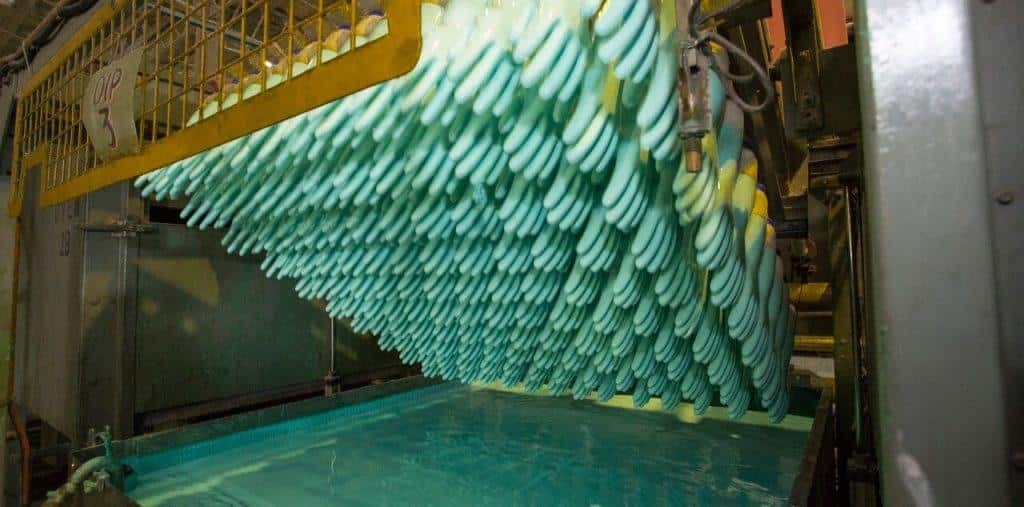Malaysia’s dominance in the global rubber glove industry is unparalleled, producing over 60% of the world’s supply and setting benchmarks in quality, innovation, and sustainability. From hospitals to laboratories and industrial sites, Malaysian-made gloves are synonymous with safety and reliability. This blog post delves into how the nation became a leader in this critical sector, its evolving challenges, and its vision for the future.
1. From Plantations to Production: Malaysia’s Glove Industry Evolution
While Malaysia’s rubber heritage dates back to British colonial plantations, its pivot to glove manufacturing in the 1980s marked a turning point. Leveraging abundant natural rubber resources and government incentives, entrepreneurs transformed the sector into a high tech, export driven industry. Today, Malaysia’s factories produce over 200 billion gloves annually, catering to global demand for medical, industrial, and specialty gloves .
Key milestones include:
- 1980sto 1990s: Emergence of glove giants like Top Glove and Hartalega, driven by automation and latex processing innovations .
- 2000s: Expansion into nitrile gloves as allergy concerns grew, capturing 70% of the global nitrile market .
- 2020s: Pandemic-driven demand spikes, with exports hitting RM40 billion (USD 8.5 billion) in 2021 .
2. Why Malaysia Leads: Competitive Advantages
Several factors underpin Malaysia’s success:
- Resource Mastery: Expertise in processing both natural rubber and synthetic nitrile ensures versatility .
- Cost Efficiency: Government-subsidized energy (natural gas) lowers production costs compared to competitors .
- Quality Standards: Compliance with FDA, CE, and ISO 13485 certifications builds global trust .
- R&D Focus: Innovations like antimicrobial coatings, eco friendly materials, and ultra-thin gloves (as light as 2.5g) .
3. Challenges in a Post-Pandemic World
The industry faces hurdles as demand stabilizes:
- Labor Shortages: Over 60% of workers are migrants, with stricter labor laws increasing operational costs .
- Price Volatility: Natural rubber prices fluctuate by up to 30% annually, squeezing profit margins .
- Ethical Scrutiny: Allegations of forced labor in some factories have led to U.S. Customs bans, pushing brands to adopt stricter ESG practices .
- Global Competition: Thailand and China are rapidly expanding synthetic glove production .
4. The Road Ahead: Innovation and Resilience
- Smart Gloves: Integrating sensors to monitor wearer fatigue or chemical exposure in real time .
- Hybrid Materials: Combining natural rubber with synthetic fibers for enhanced durability .
- Emerging Markets: Tapping into Africa and South America, where healthcare infrastructure growth drives demand .
Looking for Durable Rubber gloves?

Elevate your safety standards with Safetyware’s premium rubber gloves—crafted for durability, comfort, and compliance. Our GenPlus™ PF1712 Flocklined Gloves (EN388/EN374 certified) offer unmatched grip and chemical resistance for industries from food processing to heavy machinery. For extreme conditions, try the Duramax™ HF2812 Heavy-Duty Gloves, featuring a 28mil thickness and diamond embossed palms for superior handling. Designed with eco friendly materials and sustainable packaging, Safetyware gloves protect both your hands and the planet.
Conclusion
Malaysia’s rubber glove industry is a testament to strategic vision, adaptability, and relentless innovation. As the sector navigates post pandemic challenges and embraces sustainability, it continues to safeguard millions of lives globally. For industries prioritizing safety and ethics, Malaysian gloves—and brands like Safetyware—remain the gold standard.
Protecting hands, powering progress. 🧤🌍
For more updates on safety news and insights, visit our website at Safetyware.
Any Questions? Contact Us:
📩 Email: [email protected]
🌐 Website: www.safetyware.com
📞 Contact us: WhatsApp

